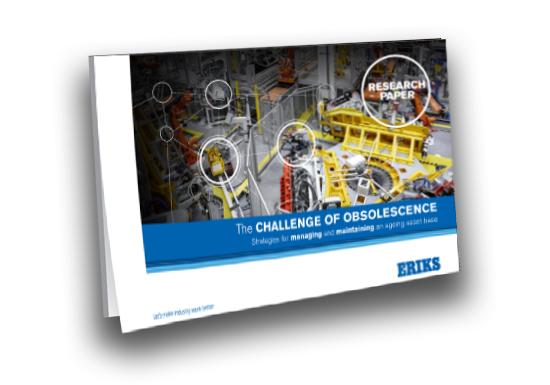In this article
Create an Effective Asset Management Strategy in 5 Steps
Asset management can seem complex and intimidating, but careful planning, along with acknowledging where in-house expertise ends and external expertise begins, can be a good place to start.

Step One: Define Your Objectives
Asset management can be a difficult concept to define, and with each business having different areas of concern and objectives to meet, it certainly isn’t a one-size-fits-all solution.
It allows a business to control costs, expand the working lifetime of machinery, reduce downtime lost to breakdowns and repairs, increase output, and maintain an adequate supply of spares and consumables.
What’s crucial though, is deciding how asset management can fit within a business and its specific objectives. Whether it is reducing total cost of ownership (TCO) or minimising downtime, you can only meet objectives once you have decided what these are.
Step Two: Understand the Production Challenges
A solution is easier to find once the problem has been identified, which is why understanding any production challenges will help to shape an asset management strategy into something valuable to the business as a whole. This could vary from noting blockages and leaks and how these are managed or prevented, to acknowledging a reliance on key equipment and the likelihood and impact of its failure.
Step Three: Audit Obsolescence, Reliability and Energy
Obsolescence, reliability and energy efficiency apply to every aspect of a business, from critical machinery down to the most innocuous of components. To get a good overall picture of the role these elements are playing in a business, an audit can be an extremely useful resource. This stage can be tricky to conduct in-house though, so it could be worth investing in an expert provider of auditing services to ensure that no stone is left unturned.
Step Four: Commission the Technology Required
With a wide range of technology available, asset management programmes can be both efficient and easy to implement, with relatively little disruption to working practices. Once the challenges and objectives have been decided, a specialist can install and commission appropriate hardware. As well as keeping on top of supply, demand, and functionality, an effective asset management system can allow a business to identify patterns and gradually improve its structures and processes.
Step Five: Set KPIs to Track Progress and Identify Areas of Improvement
Patience is a virtue. Even the most carefully planned asset management strategy won’t reap rewards overnight. It’s therefore important to identify the KPIs and objectives of any asset management strategy implemented, no matter how small, in order to keep track of progress, identify areas of improvement, and learn from any errors. It might seem disheartening in the short-term but businesses can expect to see significant gains in efficiency, productivity and reputation in the long-term. There is no better time to implement than now!
The Challenge of Obsolescence
NEW WHITEPAPER: Strategies for Managing and Maintaining an Ageing Asset Base
ERIKS has once again teamed up with the IET to create a new whitepaper exploring UK industry's exposure to obsolescence.
Discover current attitudes towards obsolecence, including policies and how it is being managed on the ground.
Click here for more information on Asset Management, or contact your local ERIKS Service Centre, who will be happy to discuss your options with you.
#ERIKS #LetsMakeIndustryWorkBetter #AssetManagement


